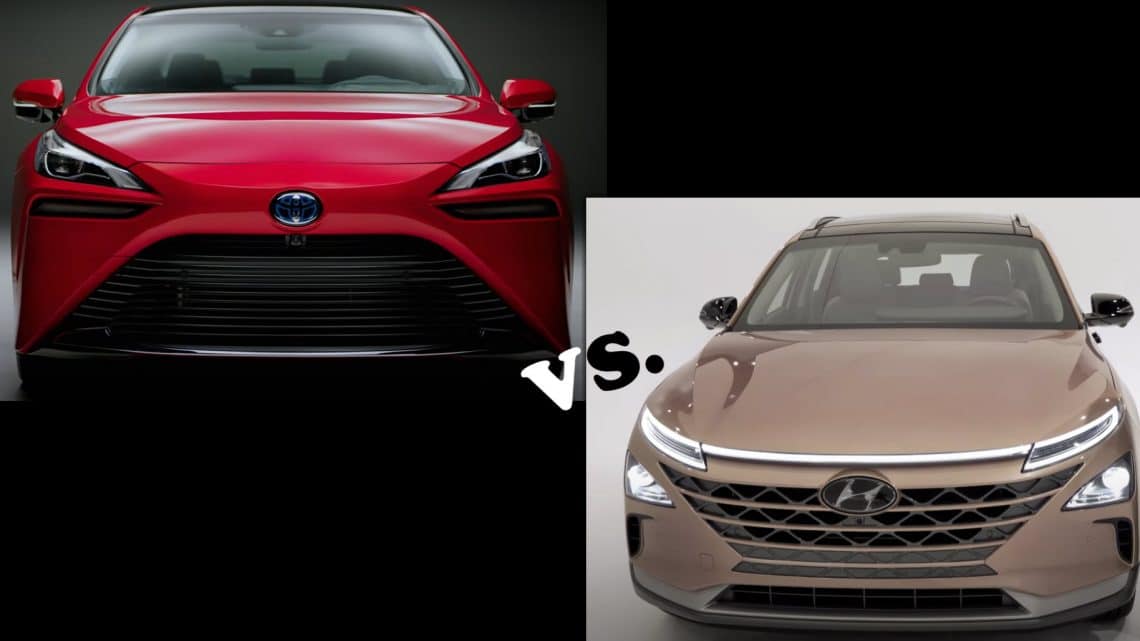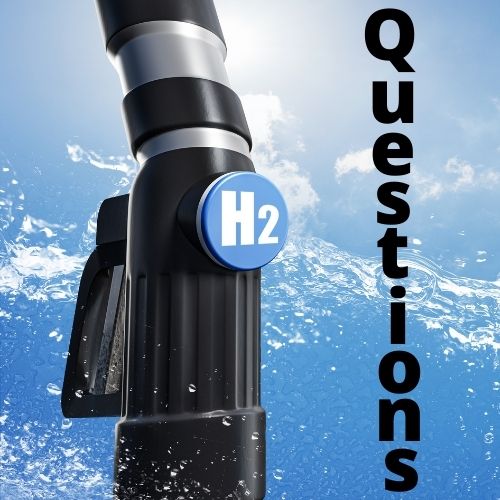
Toyota Mirai vs Hyundai Nexo: How these hydrogen cars compare
January 29, 2022These top fuel cell vehicles get lots of time in the spotlight, but how are they similar and different?
With such potential behind the widespread use of hydrogen cars, it’s no wonder they regularly make automaker headlines such as Hyundai and Toyota news.
Fuel cell vehicles are as different from each other as conventional gasoline powered vehicles are.
Two of the most popular hydrogen cars are the Toyota Mirai, a sedan, and the Hyundai Nexo, an SUV. Right off the bat, it’s obvious that there are some substantial differences between the experiences for drivers of these passenger vehicles.
Still, the shape of these fuel cell vehicles (FCVs) is far from the only thing that is different about them and H2 is far from the only thing they have in common. We’ve taken a closer look at what these vehicles bring to the road, starting from the outside, then working our way in.
Hydrogen-powered cars: The Mirai and the Nexo from the outside
The Toyota Mirai’s exterior is a couple-like sedan, which gives it the look of a luxury vehicle. It has a bold exterior presence with an attractive grille at its front bumper, and stylish wheels to set off its sleek design.
Toyota Mirai Interior and Features:
This rear-wheel-drive car’s powertrain is critically acclaimed. This car also features a single Permanent magnet AC synchronous electric motor. It receives its power from an advanced polymer electrolyte fuel cell and achieves 182hp and 300 lb-ft of torque. The Mirai achieves 60mph at 9.2 seconds, which is a full second slower than the Hyundai Nexo.
The Nexo has a solid SUV exterior with a number of tasteful design elements to suit its style, such as a front grill design, flush door handles, and an overall masculine appearance. It has a 40kWh battery pack for a tandem single electric motor powered by a 95kW fuel cell stack. This allows for 161hp and 291 lb-ft of torque in a front-wheel-drive configuration. Between these two hydrogen-powered cars, this one achieves 60mph faster at a solid 8.4 seconds.
Hydrogen powered cars: The Mirai and the Nexo from the inside
When comparing these hydrogen-powered cars, it’s the Toyota Mirai that stands out over the Hyundai Nexo for their interior dynamics. The sedan’s cabin is luxury crafted to provide a spectrum of features that enhance comfort and promote an opulent feeling.
The Mirai’s infotainment system is controlled by way of a 12.3-inch touchscreen with superior intuitive features to those in the Nexo’s system. The system includes a range of apps, dynamic navigation, hands-free wireless Bluetooth connectivity and dual screens that make it highly convenient to use and appealing to see.
The cabin has a multi-information display system with lots of info and crisp graphics as well as a Qi-wireless charging pad and four USB ports. Its digital rear-view mirror boasts a Homelink system and an engaging experience behind the wheel through the color head-up display.
Though the moonroof and its dual fixed panoramic view, the inside of the cabin feels quite spacious, but the three-zone climate control system combined with ventilated and heated seats ensures that everyone is comfortable.
On the other hand, while the Hyundai Nexo’s cabin isn’t the more luxurious of these hydrogen-powered cars, but it is still impressive for its long list of comfort and infotainment features and its user-friendliness. The SUV is roomy and has 30 cubic feet of carbo space behind the back seeds. It has a 12.3-inch touchscreen infotainment system with standard Apple CarPlay and Android Auto. The Bluelink app allows for additional features and improved convenience.
The Nexo has push-button transmission controls, a digital instrument panel, and remote engine starting, in addition to a wireless smartphone charging pad and two USB charging ports to complete the convenient feeling from the driver’s seat.
Price and Range: Mirai vs Nexo
The Toyota Mirai has a slightly better range than the Hyundai Nexo. The Mirai’s XLE version has a 402-mile range, while the Limited version, which is heavier, has a 357-mile range. The Nexo Blue version has a 380-mile, range and the Limited Edition has a 354-mile range.
In terms of price, there is a big difference between these two hydrogen-powered cars. The Mirai has a $49,500 price tag, whereas the Nexo will have drivers investing considerably more at $61,000.
How do hydrogen cars work
 H2 Spotlight Questions – Is Toyota making a hydrogen combustion engine? Learn the answer! Check out the latest Toyota news featuring their investments and developments into hydrogen combustion engine technology. The Japanese automaker is definitely proving that it’s all-in when it comes to H2. HFN has been following this story since the automaker first announced it. Our Learning Center offers even more great H2 information, so don’t miss that or the free ebook. Sign up below so you’ll never miss out on the latest as it happens.
H2 Spotlight Questions – Is Toyota making a hydrogen combustion engine? Learn the answer! Check out the latest Toyota news featuring their investments and developments into hydrogen combustion engine technology. The Japanese automaker is definitely proving that it’s all-in when it comes to H2. HFN has been following this story since the automaker first announced it. Our Learning Center offers even more great H2 information, so don’t miss that or the free ebook. Sign up below so you’ll never miss out on the latest as it happens.
*Video credit: Hyuandai YouTube https://www.youtube.com/channel/UCx_eAZKDceT1yaY4bRo636A
ToyotaUSA Youtube: https://www.youtube.com/channel/UC1pOTJteEef10zJM0cHs4iQ



 With over 15 years of reporting hydrogen news, we are your premier source for the latest updates and insights in hydrogen and renewable energy.
With over 15 years of reporting hydrogen news, we are your premier source for the latest updates and insights in hydrogen and renewable energy.